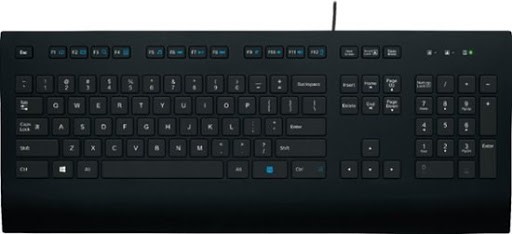Have you ever wondered about the different types of keyboards available in the market today? You may have heard about mechanical keyboards, but there's another type of keyboard that you should know about - the membrane keyboard.

What is a Membrane Keyboard?
A membrane keyboard, also known as a rubber dome keyboard, is a type of keyboard that uses a flat, flexible surface made of silicone rubber or similar material as the main switching mechanism for registering keystrokes. The membrane keyboard design was first introduced in the 1980s by a company called Key Tronic, to provide a cheaper and more reliable alternative to the bulky mechanical keyboards that were commonly used at the time.
One of the main advantages of a membrane keyboard is its low profile and compact size. The use of a single membrane sheet as the keyswitch mechanism allows for a very thin keyboard design, making it ideal for use in laptops and other portable devices. The membrane keyboard is also much quieter than a mechanical keyboard, as there are no individual switches that need to be pressed and released with a clicking sound. This can be beneficial in environments where noise levels are a concern.
How to Distinguish a Membrane Keyboard from a Mechanical Keyboard
At first glance, it may be difficult to distinguish between a membrane keyboard and a mechanical keyboard, as both types can look similar in appearance. However, there are some key differences that can help you identify which type of keyboard you are working with:
1. Check the Keystroke Feel
A mechanical keyboard provides tactile and audible feedback with each keystroke, giving the user a more satisfying and responsive typing experience. Membrane keyboards, on the other hand, have a mushy, soft feel to the keys, and they do not provide the same level of feedback as mechanical keyboards.
2. Look for Individual Switches
Another way to distinguish between a membrane keyboard and a mechanical keyboard is to examine the underside of the keycaps. A mechanical keyboard will have individual switches that are visible beneath each keycap, while a membrane keyboard will not have any visible switches.
3. Measure the Thickness
A mechanical keyboard is generally thicker and heavier than a membrane keyboard, due to the individual switches and other components used in its construction. If you're unsure about the type of keyboard you're using, try measuring its thickness and weight to determine whether it's a mechanical or membrane keyboard.
Conclusion
Now that you know what a membrane keyboard is and how to distinguish it from a mechanical keyboard, you can make a more informed decision when choosing a keyboard for your needs. Whether you prefer the tactile feedback of a mechanical keyboard or the slim profile and quiet operation of a membrane keyboard, there is a keyboard out there that will suit your preferences.
